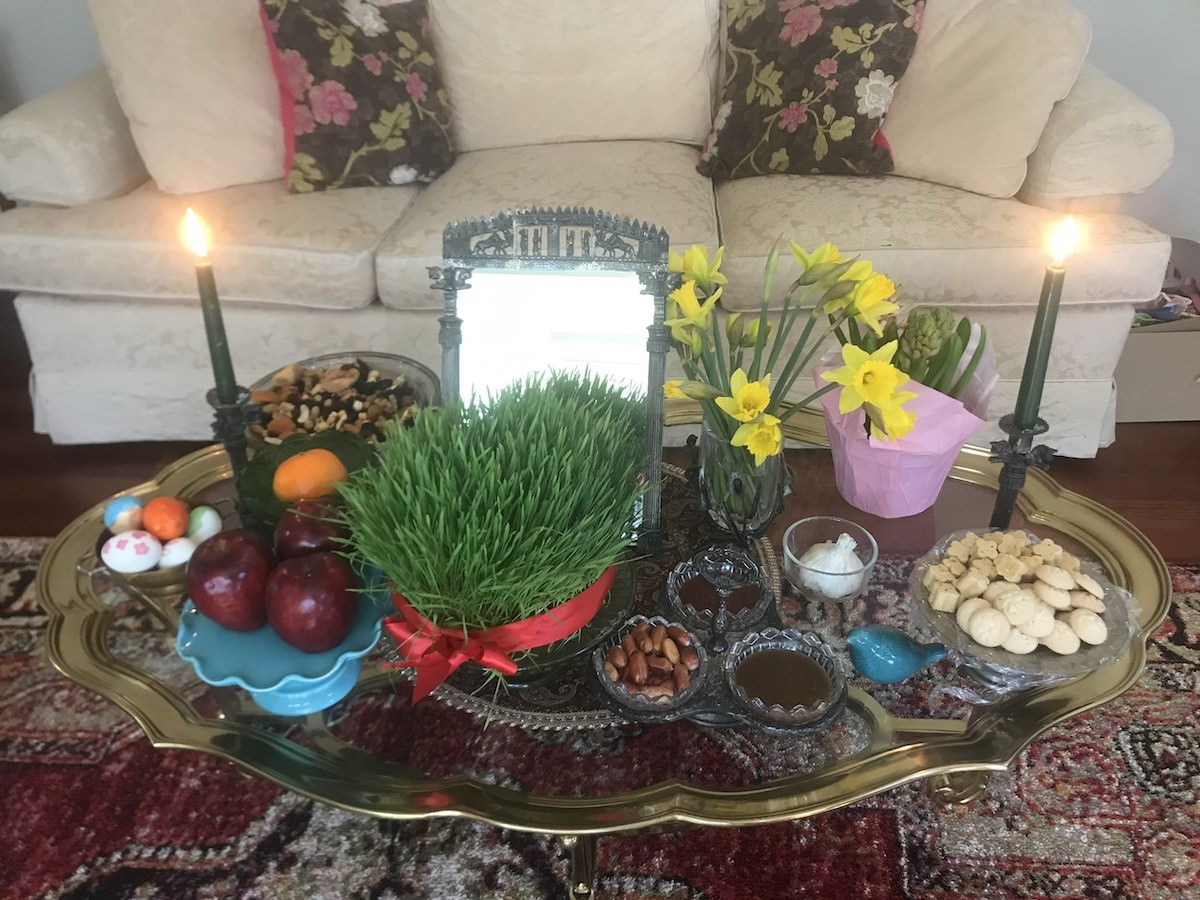How one student celebrates Persian New Year from her dorm room

Spring has sprung and so have many traditions surrounding the energizing buzz of the blossoming season, including Persian New Year. This year, the holiday was celebrated on March 20, also the spring equinox. However, the holiday is much more than one night of festivities.
There are three parts to Persian New Year, the first being Charshanbeh Suri, which takes place the Wednesday before the true New Year. The celebration occurs at night, and history freshman Nora Asayesh and her family normally go to Santa Cruz to light bonfires that aid in the ritual.
“We jump over the bonfires and say this chant which is ‘Zardi-ye man az to, sorkhieh to az man,’” Asayesh said. “It translates to ‘may the fire give me all of its positive energy and take all the negative energy out of me for the new year.’”
An immense part of Persian holidays is the food, which includes tea, soup and a dish with herbal rice and white fish called polo ba mahi.
Persian New Year’s second part happens a week after Charshanbeh Suri and is called “Norouz,” meaning “new day.” The main celebratory activity involves setting up a table called the Haft-Seen which honors the 7 S’s, which are symbolic and edible objects that represent aspects of a fulfilling life such as Seer (garlic) for good health and senjed (dried oleaster fruit) for love.
“It’s meant to present the seven pillars of the Zoroastrian religion,” Asayesh said. “My family’s not Zoroastrian and most Iranians aren’t Zoroastrian anymore, but it is still celebrated among people who aren’t religious.”
The third part of Persian New Year is Sizdah Bedar, occurring 13 days after Norouz. Typically, students in Iran will have those two weeks of school off.
“On that day, everybody goes to the park, and it’s a picnic and you have watermelon and sandwiches,” Asayesh said.
Among the 7 S’s table set up for Norouz is sabzeh, which is grass that has sprouted in a dish. Sabzeh is used for a common ritual that involves putting it in a river.
Asayesh said Norouz has housed many special memories for her over the years. Part of the Haft-Seen table includes decorative eggs. In Asayesh’s childhood, while other children were carelessly decorating their eggs, she had other expectations.
“My mom is an artist, and that’s always been a big part of my upbringing,” she said. “I have so many memories of intricately designing the eggs and sitting next to my mom.”
Living in the dorms has created some differences in the way that Asayesh normally celebrates the New Year, but she has still navigated ways to participate.
“Coming to college, I didn’t really know how to continue being totally in touch with my Persian culture,” Asayesh said. “But creating those changes almost made me feel more integrated with it just because I felt like it’s mine.”
Some of Asayesh’s celebrations this year included phone calls with her family and amending traditions so she can do them from her dorm room.
With political unrest happening in Iran, however, Asayesh said the holiday had some darker undertones this year.
“It’s something that’s supposed to be a really happy holiday, especially in Iran. But, it’s difficult to celebrate the new year when the future of Iran is up in the air and is really uncertain,” Asayesh said. “There’s a pattern, especially for younger generations, of not having a lot of hope.”
Beginning in September of 2022, Iranians have been demonstrating mass protests after Mahsa Amini died in government custody after violating the hijab dress code. Since then, many civilians have been killed in protests.
“It makes things difficult because, especially from my perspective, I’m not really dealing with any of the same struggles. So it’s easy for me to be excited for the new year but it’s totally different for people who are actually experiencing this in [Iran],” she said.
Asayesh said some of her favorite parts of the culture and new years celebrations are dinner parties, food, music and dancing.
“Everybody will stay in a circle and people will take turns in the middle,” Asayesh explained. “It’s a lot of fun because you see people from different generations, like I’ll be dancing with my parents or somebody’s grandpa. It brings people together.”
Asayesh said that she wants to continue immersing herself in Persian culture even with the barriers created by dorm life.
“I understand the holiday and the culture and the tradition so much that I still want it to be a part of my life, so I’m actively trying to continue.”

